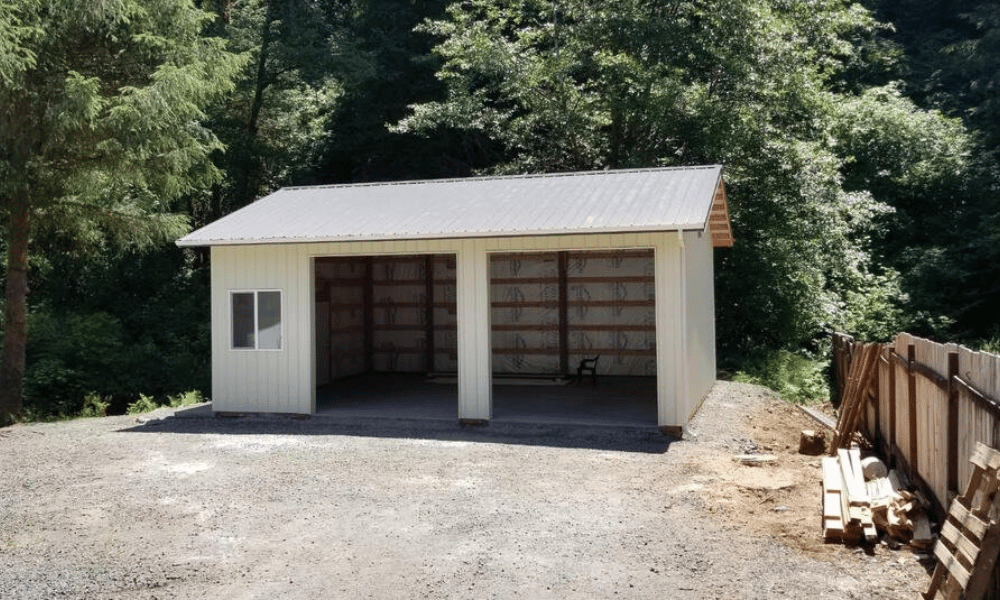Building a barn, whether it’s a pole barn or a traditional one, can be an exciting yet daunting project. It’s more than just erecting walls and a roof; it’s about creating a functional space that meets your specific needs. With the right planning and understanding of the nuances involved, you can create a structure that not only adds value to your property but also serves its purpose effectively. In this comprehensive guide, we'll delve into everything you need to know before embarking on this journey.
What You Need to Know Before Building a New Pole or Traditional Barn
Before diving headfirst into construction, there are several fundamental aspects to consider when building any type of barn. This section will cover essential factors like design, materials, zoning laws, and budget considerations.
Understanding the Types of Barns: Pole vs. Traditional
What is a Pole Barn?
A pole barn is typically constructed using vertical poles set in concrete as the primary support structure. This form of construction allows for wide-open interior spaces without the need for load-bearing walls.
Advantages of Pole Barns
Cost-Effectiveness: Generally cheaper to build due to fewer materials and labor costs. Quick Construction: Less time-consuming because they require simpler designs. Versatility: Can be easily modified for different uses—storage, workshops, stables, etc.What is a Traditional Barn?
Traditional barns usually refer to structures built with wooden beams or steel frames that require more extensive foundational work compared to pole barns.
Advantages of Traditional Barns
Durability: Built to last longer under extreme weather conditions. Aesthetic Appeal: Often viewed as more visually appealing and can enhance property value. Customization: Offers more options for architectural styles and finishes.Factors Influencing Your Choice Between Pole Barns and Traditional Barns
When deciding between pole barns and traditional barns, consider these influencing factors:
- Budget Constraints Intended Use Local Climate Land Availability Future Expansion Plans
Zoning Laws and Permits
Before laying the first pole or beam, check local zoning laws and regulations regarding barn construction in your area. Often overlooked, this step can save you from costly mistakes down the line.
What Permits Are Required?
Building permits Zoning permits Environmental permits (if applicable)Choosing the Right Location for Your Barn
The location of your barn is crucial for functionality as well as compliance with local ordinances.
Factors to Consider When Choosing Location
- Proximity to existing structures Drainage patterns Accessibility for vehicles and equipment Sunlight exposure
Design Considerations for Your New Barn
Designing your barn involves balancing aesthetics with functionality.
Functional Needs Assessment
Identify what you’ll primarily use your barn for—is it storage, livestock housing, a workshop, or something else?
Space Planning Essentials
Consider how much space you'll need based on equipment size or animal types.
Selecting Materials for Construction
The choice of materials will impact durability and maintenance requirements.
Common Materials Used in Pole Barns
- Treated wood posts Metal roofing Insulation materials
Common Materials Used in Traditional Barns
- Timber framing Stone foundations Clay tiles
Budgeting Your Project: Costs Associated with Building a Barn
A well-planned budget keeps your project on track financially.
Cost Breakdown Overview
| Expense Category | Estimated Cost Range | |----------------------|----------------------------| | Materials | $10 - $30 per square foot | | Labor | $5 - $15 per square foot | | Permits & Fees | Varies by locality | | Utilities Install | $1,000 - $5,000 |
Financing Options Available for Barn Construction
If you lack sufficient funds upfront, explore these financing options:
Personal loans Home equity loans Specialized agricultural loansInsurance Considerations When Building Your New Barn
Don’t forget about insurance! Ensure you have adequate coverage throughout the construction process.
What Types of Insurance Do You Need?
General liability insurance Builders' risk insuranceFAQs About Building a New Pole or Traditional Barn
Here are some common questions people ask when considering building their new barn:
1. What is the average cost of building a pole barn?
The average cost ranges from $10 to $30 per square foot depending on materials used and design complexity.
2. How long does it take to build a pole barn?
Typically around 1–4 weeks depending on size and weather conditions.
3. Do I need permits for building a barn?
Yes! Always check local regulations beforehand.
4. Can I build my own barn?
Absolutely! Just ensure you're knowledgeable about construction practices and regulations.
5. What’s better for livestock: pole barns or traditional barns?
Both serve well; however, traditional barns often provide better insulation against extreme temperatures.
6. Is maintenance different between pole barns and traditional barns?
Yes; traditional barns may require more upkeep due to their materials but generally last longer if maintained properly.
Conclusion: Making An Informed Decision
As we conclude how to build pole buildings this extensive guide on what you need to know before building a new pole or traditional barn, remember that preparation is key! From understanding zoning laws to selecting appropriate materials—each decision impacts not just the construction phase but also how well your barn serves its purpose in the long run.
By keeping all these factors in mind—and perhaps even consulting professionals along the way—you'll be well-equipped to embark on this exciting endeavor confidently!
In summary, whether you opt for pole barns or traditional barns depends largely on your specific Dean Lindsey Construction needs and resources available at hand—so weigh your options carefully!

Feel free to reach out if you have any further questions!